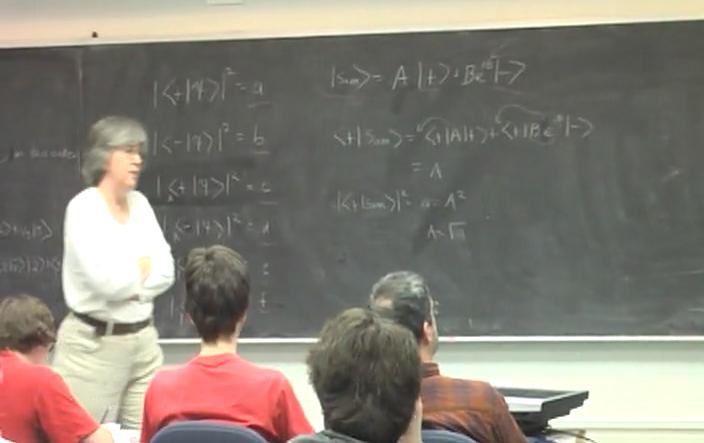You are here: start » activities » guides » spspinhalfunknowns
Navigate back to the activity.
Finding Unknown States Leaving the Oven in a Spin-$\frac{1}{2}$ System: Instructor's Guide
This activity can also be part of a larger integrated laboratory. See the Spins Lab 2 activity page.
Main Ideas
- Postulate 4 of quantum mechanics
- Complex numbers
- Relative phases
- General spin vector representation
Students' Task
Estimated Time: 30 minutes Students must find the mathematical representation of four different unknown Spin-$\frac{1}{2}$ quantum states. Students must accomplish this using only the probabilities of measuring the unknown state in the state $\vert \phi \rangle$, where $\phi$ is either spin-up or spin-down in the x,y, or z-direction.
Prerequisite Knowledge
- Understanding of the first four postulates of quantum mechanics, particularly postulate 4.
- Experience with complex numbers in polar form.
- Know the difference between an overall phase and a relative phase in a quantum state vector.
Props/Equipment
- Computers with the Spins OSP software
- A handout for each student
Activity: Introduction
After splitting the students into small groups, tell the groups to change the state preparation device's initial setting from “RANDOM” to “UNKNOWN #1”. The oven now fires out a single state, rather than it's original random firing. Tell the students to fill out the probabilities on the handout using a single Stern-Gerlach device, and then to move on to the other four unknown states and repeat the same process.
Activity: Student Conversations
Activity: Wrap-up
After performing the activity, students will now have more than enough probability data for each unknown state to find the coefficients. However, students typically don't know how to use this data to find the coefficients. Work with the class to develop a strategy for students to use when finding the unknown states. Specifically, before finding any unknown state, students need to represent the quantum state in a general form in some basis and then solve for the unknowns. Remind them the process is similar to when we Derived Spin-up with x Orientation in the Z-ket Basis.
Now, the inner products of the unknown state with different orientations of spin-up or spin-down will give information about both constants in the unknown state. As shown below, explicitly relating how the terms in the unknown state relate to the probabilities will be helpful for students.
Be sure to note, however, that when students are attempting to find the phase angle using the inner products, any sine or cosine term by itself will give two possible values for the phase angle. So, the students will have to try a different outer product to see what possible values for the angle arise. Only one angle will be able to satisfy both inner products; this will be the correct phase angle.
Extensions
This activity is the first activity contained in SPINS Lab 2 . This activity is designed to be presented in the midst of lectures, but if you have a 2 hour block of time dedicated to labs, the above lab is a better choice. The following activity, also contained in SPINS Lab 2 is Analyzing a Spin-1/2 Interferometer
